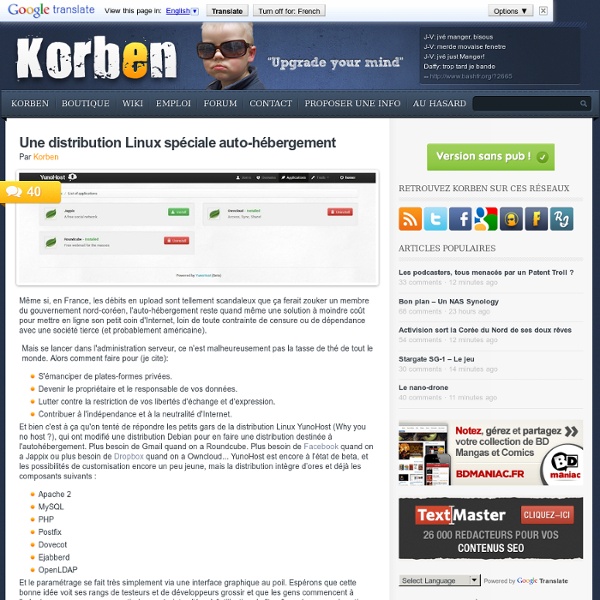Une distribution Linux spéciale auto-hébergement

tutoriel:comment_creer_un_terminal_x_ou_recycler_une_vieille_machine
Cette page présente beaucoup d'informations dépassées et nécessite une complète refonte. Si vous avez les compétences pour reprendre le contenu de cette page n'hésitez pas à nous apporter votre aide. Introduction Motivation Vous venez d'acquérir une bête de combat avec le processeur dernier cri et une carte graphique d'enfer capable à elle seule de faire fondre les dernières glaces du Groenland, avec un nombre de Giga de RAM dépassant le Google et des capacités de stockage (notez que pour ici il n'est pas nécessaire d'avoir la dernière bête de compet')… Vous aimeriez que les ressources de cet ordinateur ne soient pas sous-exploitées. Vous avez dans vos placards de vieux ordis et aimeriez les recycler. Terminal X? Voir une alternative : XVNC - Un Terminal Serveur X par Vnc Utilisation Alternatives La solution proposée sur cette page nécessite qu'une distribution linux soit installée sur le client, il faut donc que cette machine possède un disque dur. Vocabulaire & Conventions Matériel Serveur par
Macbuntu Makes Your Linux Desktop Look Like Mac OS X
You don't need to buy a Mac. You can go the Hackintosh route instead. @MehStrongBadMeh: Yeah, I have and it's lovely :-) But some people also prefer Linux to OS X, for any myriad of reasons, but still like OS X's GUI. @MehStrongBadMeh: That's good to an extent. Its rare you'll ever get it working completely. @hvrock13: I don't think that's true at all. In fact, the biggest bummer of building a Hackintosh is that you then have a lot of cool hardware (like USB 3.0) that OS X doesn't support @MehStrongBadMeh: Some hardware is tough to Hackintosh, Apple makes sure that you have to buy their expensive-ass hardware. @Whitson Gordon: I have three complaints when it comes to Hackintoshes (and yes, I've built a few myself): 1. 2. Later she just bought a Mac. Lesson: don't build a Hackintosh unless you actually *really* enjoy tinkering. 3. If you can't afford $30, then stick with Linux. @WoogleMuffin: just to tack onto point number 3: $30 is the upgrade cost from leopard or tiger to snow leopard.
Related:
Related:



